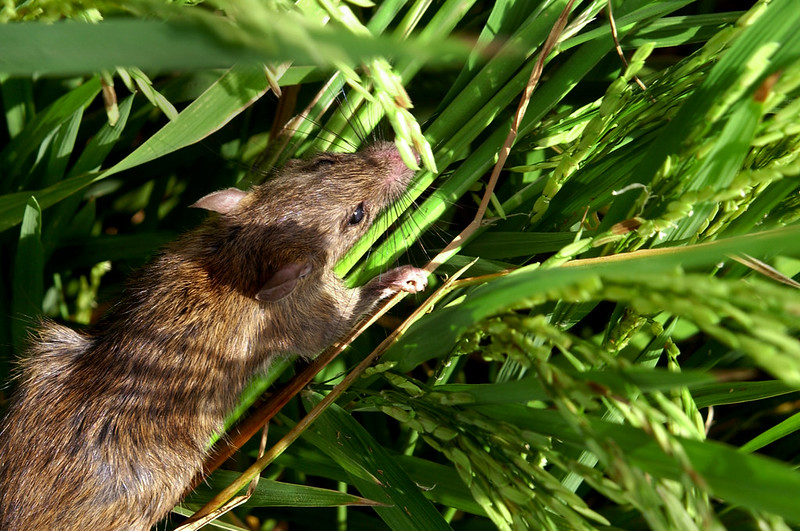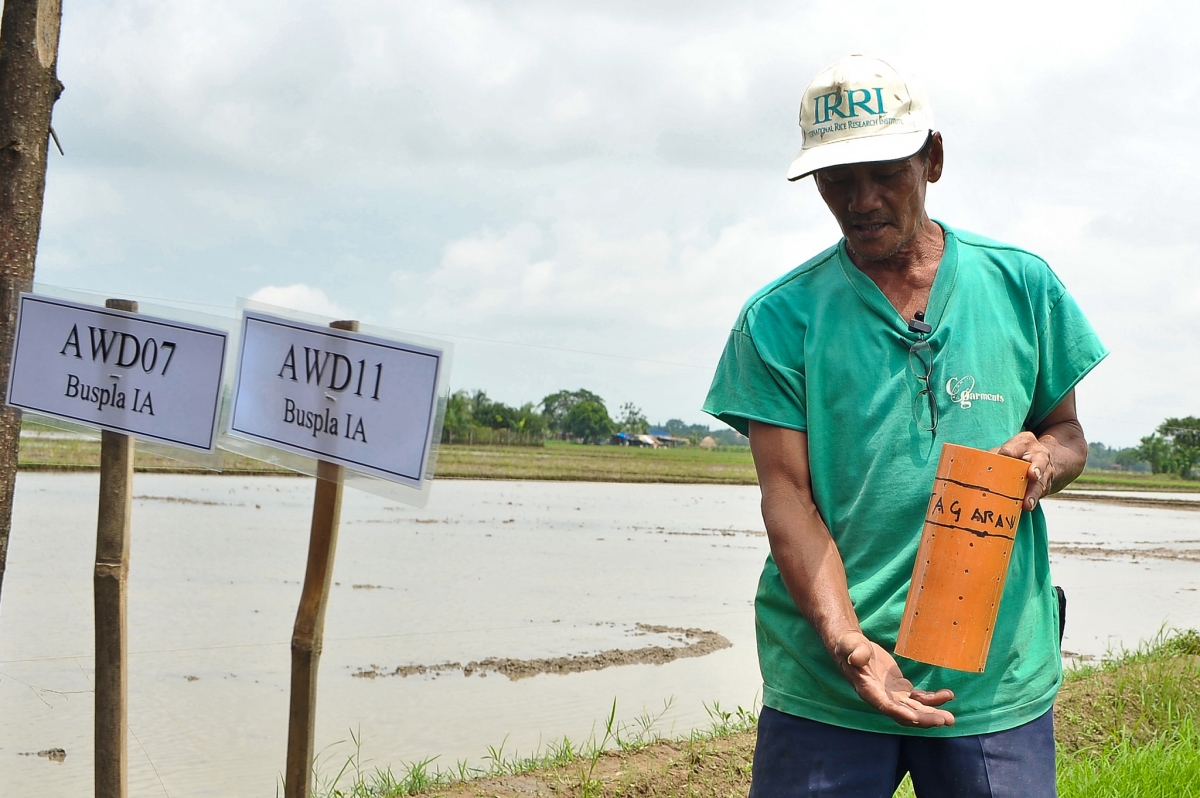Rice farmers in Southeast Asia are hesitant to adopt the water-saving technology, alternate wetting and drying (AWD) for fear the practice will lead to increased rodent pest damage. A new study has shown that AWD does not affect how much rodent pests damage a standing rice crop.

.
 AWD is one of the most widely disseminated water-saving technologies developed by the International Rice Research Institute (IRRI) in collaboration with many partner organizations. The simple but effective irrigation scheduling technique reduces the water inputs in rice production by 20−25%. The water saved through the use of AWD and modern rice varieties has enabled farmers to plant a third nonrice crop in between two rice crops, thereby increasing the intensification of the rice-based system and the farmers’ income.
AWD is one of the most widely disseminated water-saving technologies developed by the International Rice Research Institute (IRRI) in collaboration with many partner organizations. The simple but effective irrigation scheduling technique reduces the water inputs in rice production by 20−25%. The water saved through the use of AWD and modern rice varieties has enabled farmers to plant a third nonrice crop in between two rice crops, thereby increasing the intensification of the rice-based system and the farmers’ income.
AWD also reduces the emission of methane, a greenhouse gas, from rice fields by as much as 50%.
Despite numerous advantages to adopting AWD to manage water use in rice fields, many farmers in Southeast Asia are hesitant to use it because they fear it will lead to increased rodent pest infestation and higher yield loss.

..
Genuine anxiety
The farmer’s concern over rodent pest damage is not unfounded. Rodents have an enormous economic impact on the growing rice crop and stored grain in developing countries. Rats need to eat 10–15% of their body weight each day and, in grain storage, they contaminate much more rice than that with their droppings. In one year, 25 adult rats would eat and damage about half a ton of grain and produce about 375,000 droppings.
“Rodents are major pests in agricultural production,” said Dr. Grant Singleton, a rodent expert at IRRI. “In Asia, rodents cause, on average, annual preharvest losses of 5–10% in rice crops. Post-harvest losses are at a similar level. A loss of 6% is substantial, as this is enough rice to feed 225 million people for a year.”
Unfounded fear
Renee Lorica, former University of Greenwich scholar at IRRI investigated the effects of AWD on the fluctuation of rodent pest numbers, their breeding patterns, how they use the rice field landscape, and the damage levels they inflict on growing rice crops. Her study focused on the rice field rat (Rattus argentiventer) and the oriental house rat (R. tanezumi,). These are the most important rodent pests of rice in Indonesia and the Philippines, respectively.
“We found that both species predominantly used the rice paddies regardless of water level,” Dr. Lorica said. “This means that they don’t really prefer dry field over flooded ones as the farmers feared. We think that fear of predators, not water levels, is the primary factor driving habitat use. The breeding of the rice field rat is dictated by the crop stage of rice while the availability of food influences the breeding of the oriental house rat.
“We recommend the continued promotion of AWD as an integral part of the climate-smart technology package for rice production in Asia and Africa,” she added. “There is no cause for farmers to worry that AWD will aggravate rodent pest activity in rice.”
Read the full study:
Lorica R, Singleton G, Stuart A, and Belmain S. (2020). Rodent damage to rice crops is no affected b the water‑saving technique, alternate wetting and drying. Journal of Pest Science. https://doi.org/10.1007/s10340-020-01237-3.
_________________
Ms. Quilloy is a senior communication specialist at the Mechanization and Postharvest Cluster under IRRI’s Sustainable Impact Platform.





